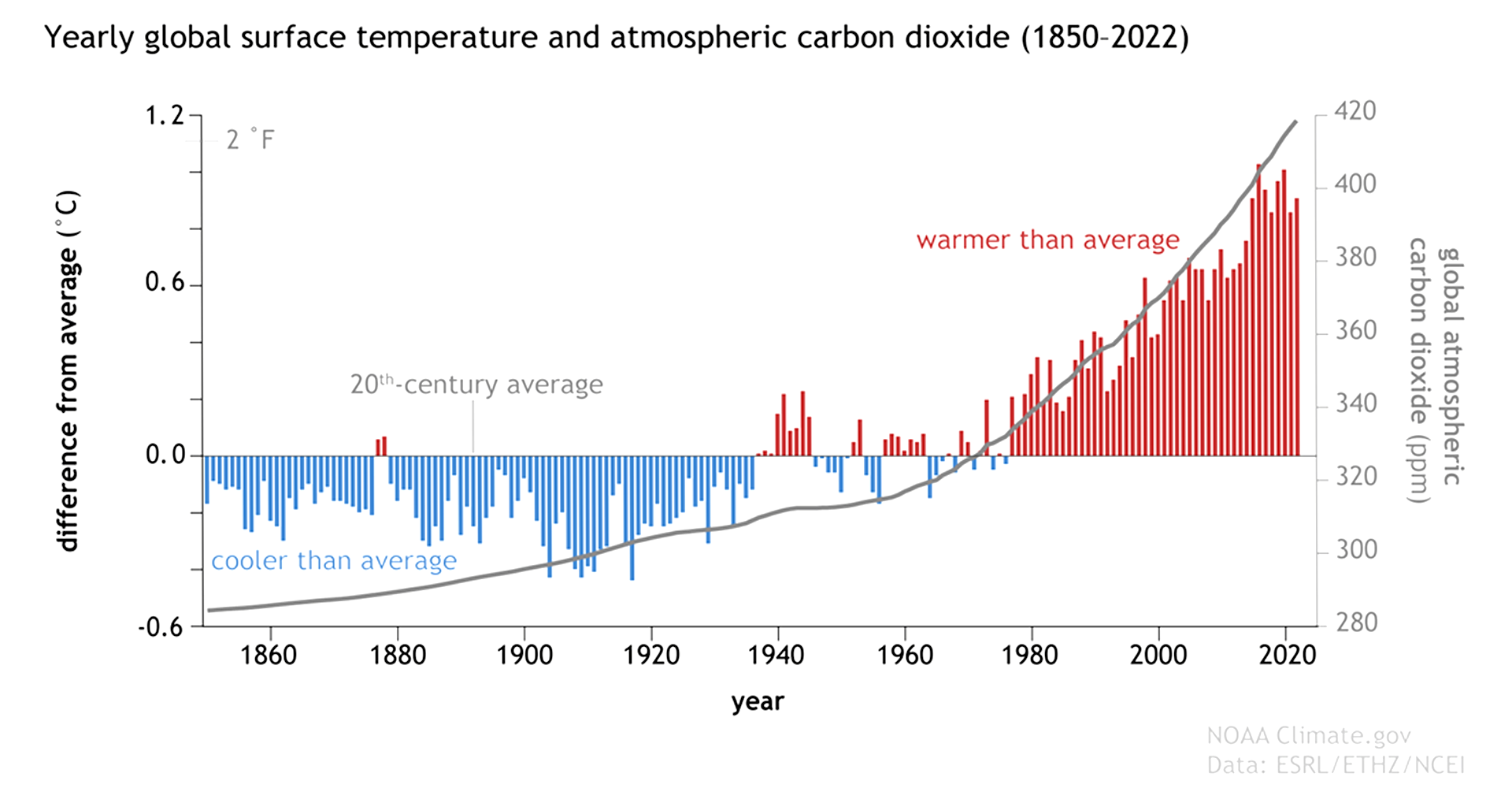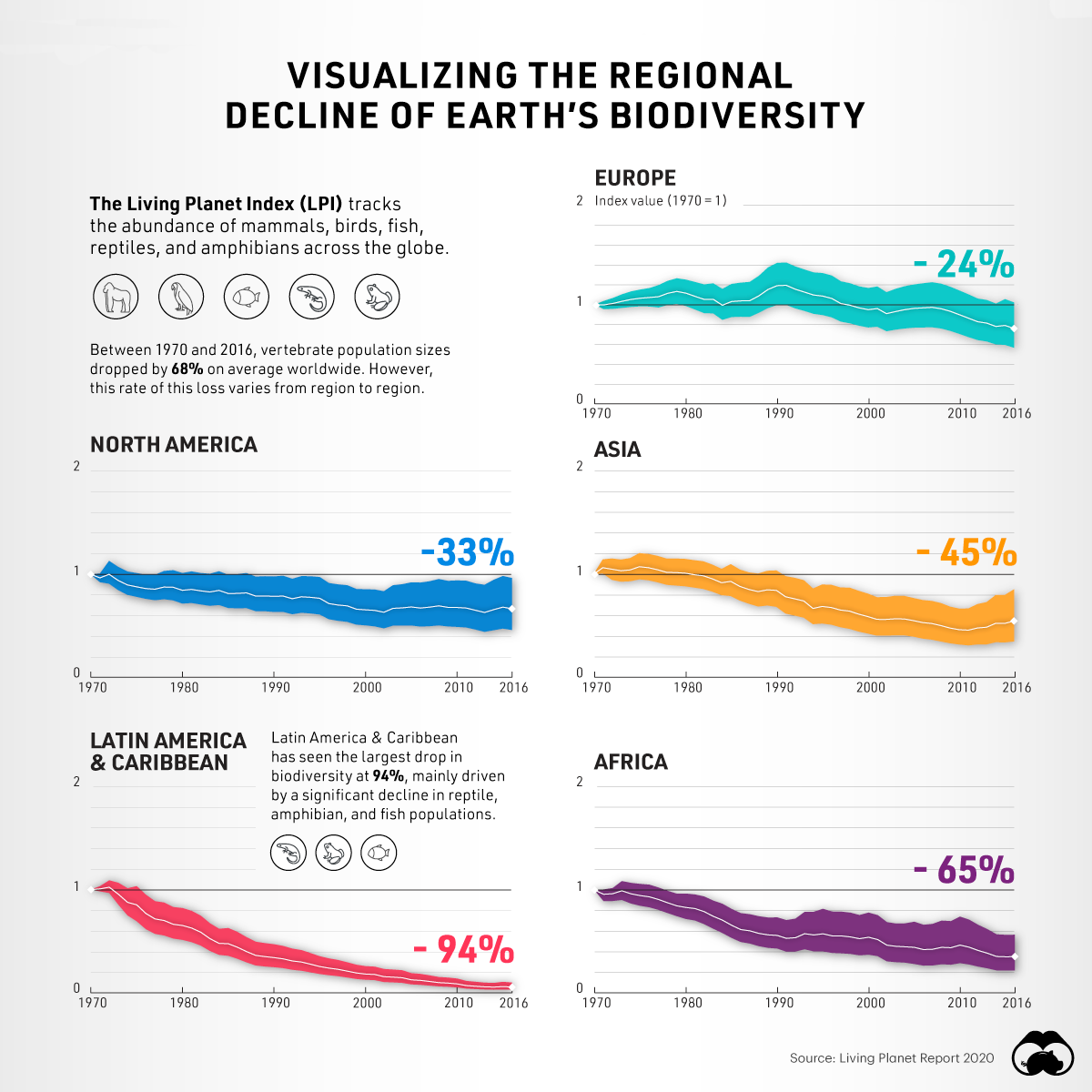The problem
We are all now becoming aware that we (the whole of humanity) are facing a climatic and ecological catastrophe if we do not make significant change in the next few years. The graphs below show the 2 biggest issues: atmospheric carbon causal link to dramatic global warming, and the devastation of biodiversity across the world.


How have we unconsciously acquiesced and allowed our environment to be marginalised as an “externality”, treated as just an unfortunate “side effect” of our economic and societal system... and how we can bring it back to the heart of everything?
The key problem, as highlighted in the book “Regenerative Leadership” (Giles Hutchins & Laura Storm), is that the growth of our modern social and economic system is founded upon highly logical and “mechanistic” principles – but that our obsessive focus on these has meant that we have become completely disconnected from principles of regeneration which underpin the entirety of the ecological system in which we live. Our production and consumption systems extract and deplete our environment and create waste which pollute it, including the devastating global warming impact of so called “greenhouse” gases in our atmosphere. Kate Raworth in her groundbreaking book, “Doughnut Economics” describes how the logical economic models and systems which drive our entire society completely externalise the environment - as if it wasn’t even part of our living system – never mind, the very life giving heart of it. It consists of mere “natural resources” which are assumed to be infinite in availability and in waste absorption capacity.
The question is: how do we change this paradigm, what leadership is required, how do we make a transformational shift to re-integrate environmental considerations into everything we do, as leaders in our organisations, and as humans in our society?
The solution
Put simply, we need to move our entire worldview, from “human-centric thinking”, to “eco-centric thinking”.
 This will involve re-thinking and re-engineering many aspects of our systems, and adopting the idea of “bio-mimicry” in all of our design thinking ie. drawing on the lessons of nature (and natural regenerative processes) and bringing them into all of our future creative processes.
This will involve re-thinking and re-engineering many aspects of our systems, and adopting the idea of “bio-mimicry” in all of our design thinking ie. drawing on the lessons of nature (and natural regenerative processes) and bringing them into all of our future creative processes.
This does not mean giving up on and/or destroying everything we have now – we can only build from where we are – but it does mean purposeful leadership to integrate this way of thinking of being into all aspects of the development of our organisations, the sectors in which we operate, and in all of our lives. There is a shipwreck in the west pacific which has spawned a thriving coral reef – a powerful metaphor for the idea of what can be achieved – from the wreck that we have created – at the local and the global level.
At the same time, and as part of this, we know we have to accelerate the reduction of carbon emissions and global warming. Every country and government, every organisation and leader, every community and every citizen, needs to be engaged in this shift. The innovation is happening and we have the technology, it is just a matter of shared human intention and effective collaboration to bring it to life.
We all have a carbon footprint, and we all have the power to make it smaller – it is critical that action happens at all these levels, and that everyone makes a difference. There are 8 billion of us on the planet – imagine if everyone decided to make this change. And even if many don’t, many will, and the difference will still be dramatic. It might not be enough to keep it below 1.5 or even 2 degrees centigrade warming... but every 10th of a degree will make a difference to the lives of future generations. You might hear people object: “there’s no point doing this if the government doesn’t doing anything”; or “if China don’t do anything”. Even if they don’t, huge impact can be achieved. But the truth is, they are taking action – and this will accelerate with time and with increasing voting pressure from citizens in every country in the world (even China) – which includes you.
The United Nations SDGs (Sustainability Development Goals) were established in 2015 as part of the Paris COP21 Climate Agreement. These lay out a comprehensive set of goals to create a safe and just future. All member states signed up to these goals.

Every leader and every organisation needs to have a plan – as responsible citizens protecting the future of the planet, as well as for business risk mitigation, and long term economic success.
The opportunity
This is a leadership opportunity unique in the history of humankind. What change are you making? What is your leadership role in this?
At Aim Higher Leadership we engage with leaders at all levels of business, governance and community organising. With our C-suite experience combined with sustainability and diversity leadership expertise, we understand commercial pressure and the challenge of changing a system from within. We enable individuals, teams and organisations to become the transformative leaders that our times require.